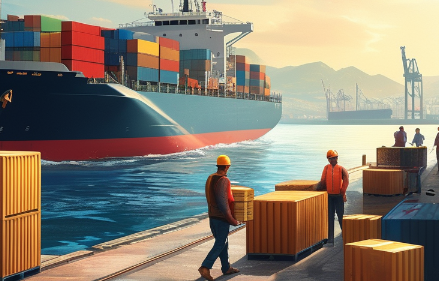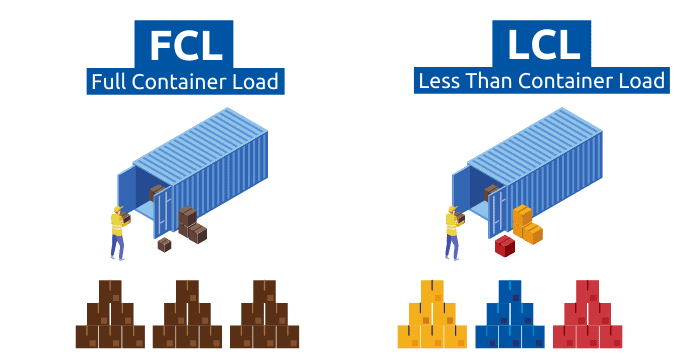If you’re managing international shipping, understanding port to port shipping transit time is essential. Whether you’re moving full container loads (FCL), less than container loads (LCL), or booking space on a vessel, knowing how long it takes for cargo to travel from one port to another can make or break your supply chain strategy.
This guide breaks down what transit time is, how it’s calculated, what affects it, and how to estimate it more accurately—plus tips to reduce delays and stay competitive in a fast-moving global trade environment.
1. What Is Port to Port Shipping Transit Time?
Port to port shipping transit time refers to the amount of time it takes for a cargo shipment to travel between the origin port and the destination port—excluding time spent in customs clearance, pre-carriage, and delivery at the final location.
For example, shipping from Shanghai to Los Angeles may take 12–18 days depending on the carrier and sailing schedule. But that’s just the sailing time—it doesn’t account for inland transport, loading/unloading, or customs procedures.

2. How Is Transit Time Calculated?
Transit time is usually calculated by shipping lines based on:
- Departure day from origin port
- Arrival day at destination port
- Carrier schedules
- Weather conditions
- Port congestion
Here’s a simple example:
If a vessel leaves the Port of Ningbo on August 10 and arrives at the Port of Hamburg on August 30, the port to port transit time is 20 days.
However, most forwarders use transit time calculators or digital freight platforms that access real-time schedules and optimize planning.
3. Average Port to Port Transit Times (By Region)
| Route | Average Transit Time |
|---|---|
| Shanghai to Los Angeles | 12–18 days |
| Shenzhen to Rotterdam | 25–30 days |
| Qingdao to New York | 30–38 days |
| Ningbo to Hamburg | 28–33 days |
| Tianjin to Jebel Ali | 18–22 days |
🚢 Tip: Use real-time digital freight tools to get up-to-date ETAs, especially for routes affected by weather or global disruptions.
4. Factors That Affect Port to Port Transit Time
Transit time is not fixed. Several variables can affect how long your shipment will actually take:
- Carrier schedules: Not all carriers operate daily. Weekly sailings are common.
- Transshipment: More stops = longer time.
- Port congestion: Especially during peak seasons like Q4 or before Chinese New Year.
- Weather: Typhoons, hurricanes, and monsoons can cause rerouting or delays.
- Geopolitical issues: Strikes, customs policy changes, or international conflicts.
5. FCL vs LCL: Which Is Faster?
- FCL (Full Container Load): Generally faster. Less handling, fewer delays.
- LCL (Less than Container Load): Takes longer due to consolidation/deconsolidation at warehouses.
If time is critical, opt for FCL to reduce unnecessary warehouse dwell time.

6. How to Calculate Port to Port Transit Time Accurately
You can estimate it manually using carrier sailing schedules—but most businesses today use a transit time calculator that automates the process. These tools use data from:
- Carrier schedules
- Port performance metrics
- Historical transit times
- AI-predicted shipping windows
Want a shortcut?
Use a real-time transit time calculator to quickly estimate shipping durations based on origin and destination ports. It’s fast, accurate, and helps reduce lead-time surprises.
7. Port to Port vs Door to Door Transit Time
| Feature | Port to Port | Door to Door |
|---|---|---|
| Includes customs? | ❌ | ✅ |
| Includes inland delivery? | ❌ | ✅ |
| Best for? | Cost comparison, schedule planning | Full logistics visibility |
| Transit time shorter? | ✅ | ❌ (but more comprehensive) |
Always align your logistics strategy with your delivery expectations.

8. How to Reduce Shipping Delays
To shorten your port to port shipping transit time:
- Choose direct routes
- Book with reliable carriers
- Avoid transshipment if possible
- Ship during off-peak months
- Work with an experienced freight forwarder
9.Conclusion
Understanding port to port shipping transit time is crucial for efficient logistics planning, cost control, and meeting customer expectations. While many factors—like carrier schedules, weather, and port congestion—can influence timing, using real-time tools and expert planning can help you minimize delays and optimize your supply chain.
Whether you’re a first-time importer or a seasoned logistics manager, accurate transit time estimates are key to smoother, faster global trade. Use a reliable transit time calculator or partner with a trusted freight forwarder to stay ahead.
Let me know if you’d like this article formatted as a webpage, PDF, or translated into another
Request a Quote
Need a tailored solution for your shipping from China?
Let TJ China Freight Forwarder assist you with reliable, cost-effective service.
FAQ:
Q1.How often do vessels depart?
Some routes have daily sailings; others are weekly. Always check the carrier’s schedule.
Q2. Do customs delays affect port to port transit time?
No. Customs clearance occurs before or after port-to-port transit, so it’s not included.
Q3.What’s the difference between transit time and lead time?
Transit time refers only to the time a shipment spends in transit from port to port. Lead time includes the entire process—from order placement to final delivery, including production, packing, customs, and inland transportation.
Q4.How can I check the transit time before booking?
Most freight forwarders and carriers provide online tools or calculators. You can also check estimated transit durations in freight quotes or on the carrier’s schedule.
Q5.Is port to port transit time guaranteed?
No. It’s an estimate. Delays can occur due to various external factors.
